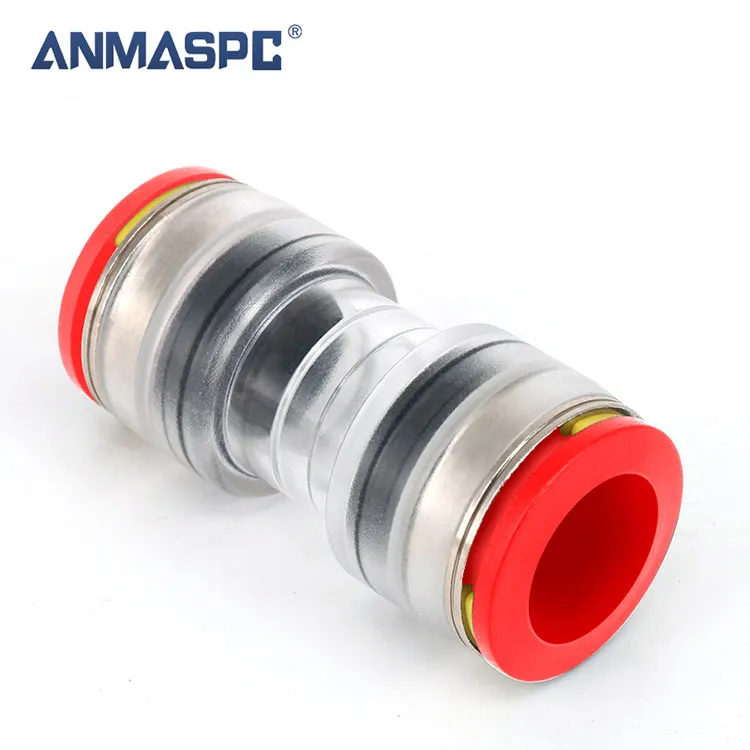How to Choose the Right Microduct Connectors for Your Fiber Optic Network
2024-09-10
Building a reliable fiber optic network requires careful planning and the right components. Among these, microduct connectors are essential for ensuring a secure and efficient connection between microduct sections. However, not all microduct connectors are created equal, and choosing the right one for your specific application is crucial. In this blog, we’ll dive into the factors you need to consider when selecting microduct connectors and how they can affect your network's performance.

1. Understanding Your Network Requirements
Before selecting a microduct connector, it's important to assess your network's specific requirements:
- Duct Size: Microducts come in different diameters depending on the number and type of fiber optic cables they will house. Your connector must be compatible with the duct size to ensure a tight, secure fit.
- Environmental Conditions: Will your network be installed indoors, outdoors, underground, or in extreme weather conditions? The connectors you choose should be designed to withstand the environmental stressors that the ducts will encounter.
- Network Design: Whether you're building a linear network or need branch connectors for complex routing, you must choose connectors that match the design of your microduct system.
2. Types of Microduct Connectors
Microduct connectors come in several configurations, each suited to different applications:
- Straight Connectors: These are used for joining two microducts of the same size in a straight line. They provide an airtight seal to ensure that the fiber cables inside are protected from contaminants.
- Push-Fit Connectors: These connectors use push-fit technology to create a secure connection without the need for tools. They are designed for quick, easy installation, making them ideal for time-sensitive projects.
- Branch Connectors: For more complex network designs, branch connectors allow you to split one microduct into two or more sections, providing flexibility for expanding the network in multiple directions.
- Reducing Connectors: If you need to join two microducts of different sizes, reducing connectors provide a transition between ducts while maintaining a secure and airtight connection.
3. Key Features to Look For
When selecting microduct connectors, several key features can impact their performance and longevity:
a. Seal Integrity
A critical feature of any microduct connector is its ability to create an airtight and watertight seal. The fiber optic cables housed within the ducts are sensitive to moisture and debris, which can cause signal degradation or even damage to the cables. Look for connectors with high-quality seals to ensure long-term network reliability.
b. Material Quality
The material of the connector plays a huge role in its durability. High-grade polymers and UV-resistant materials are common choices for outdoor applications where the connector may be exposed to sunlight and other environmental factors. For underground installations, connectors made from corrosion-resistant materials are essential to prevent degradation over time.
c. Pressure Rating
If your network involves the use of air-blown fiber optic cables, you'll need microduct connectors that can withstand the pressure required for this method. High-pressure connectors are specifically designed to handle the stress of fiber blowing while maintaining a secure seal.
d. Ease of Installation
In fast-paced deployment projects, connectors that are easy to install can significantly reduce labor costs and time. Push-fit connectors are particularly beneficial in this regard, as they can be quickly snapped into place without the need for additional tools.
4. Installation Best Practices
Even with the best connectors, improper installation can lead to issues down the line. Here are some best practices to ensure that your microduct connectors are installed correctly:
- Ensure Clean Connections: Before connecting microducts, make sure that the ends of the ducts are clean and free from debris. Any dirt or moisture can compromise the seal and reduce the effectiveness of the connection.
- Use the Right Tools: While many connectors are designed for tool-free installation, some may require specialized tools for optimal sealing. Ensure you have the necessary equipment on hand.
- Test the Seal: After installation, perform a pressure or air-tightness test to ensure that the seal between the ducts is secure. This is especially important for air-blown fiber installations.
5. Applications in Different Industries
Microduct connectors are widely used across several industries where fiber optic networks are essential:
- Telecommunications: Telecommunications companies use microduct connectors to create flexible, scalable networks that can easily accommodate future growth.
- Utilities: Utility companies that deploy smart grid technology rely on fiber optic networks supported by microduct connectors to maintain communication between different elements of the grid.
- Construction: In building large-scale infrastructure projects, microduct connectors help create robust data networks that can support the high-speed transmission needed for modern building systems.
Conclusion
Choosing the right microduct connectors is essential to the performance, reliability, and scalability of your fiber optic network. By considering factors such as duct size, environmental conditions, material quality, and ease of installation, you can ensure that your connectors will provide secure, long-lasting connections. Whether you're working on a telecommunications project or installing a fiber optic network in a smart city, microduct connectors are a key component in ensuring that your network operates smoothly and efficiently.

